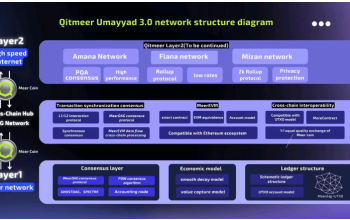In today’s global economy, commodity trading plays a pivotal role as essential raw materials and goods. From agricultural products like wheat and coffee to energy sources like crude oil and natural gas, commodities form the building blocks of industries and influence people’s daily lives worldwide. Buying and selling commodities can be lucrative, but it requires a thorough understanding of the market dynamics and a strategic approach. In this guide, we will walk you through the process of buying and selling commodities while highlighting the key factors, steps, best practices involved, and learning trading through a commodities trading academy.
Factors Influencing Commodity Prices
Before diving into the process of buying and selling commodities, it’s crucial to grasp the factors that drive commodity prices. Various elements, including supply and demand dynamics, geopolitical events, weather conditions, economic indicators, and currency fluctuations, influence commodity prices. For instance, a drought affecting major agricultural regions can lead to decreased crop yields and higher prices for agricultural commodities. Similarly, geopolitical tensions in oil-producing countries can impact the supply of crude oil, leading to fluctuations in energy commodity prices. Staying informed about these factors is essential for making informed trading decisions.
Steps to Buy Commodities
- Research and Education – To venture into commodity trading, start by educating yourself about the basics of the market. Consider enrolling in a reputable commodities trading academy like Queensway Academy to gain a solid foundation. These academies offer courses that cover everything from understanding commodity types to analysing market trends and developing trading strategies.
- Choose a Commodity: Select commodities that align with your interests and expertise. Your familiarity can be your advantage, whether it’s precious metals, agricultural products, or energy resources.
- Select a Buying Method: Commodity trading can be done through futures contracts, ETFs, or physical ownership. Each method comes with its benefits and risks, so understanding them is crucial.
- Find a Broker: A reputable broker is your gateway to the commodities market. Ensure they offer a user-friendly platform, competitive fees, and a track record of reliability.
- Develop a Strategy: Tailor your approach based on your goals. Are you a day trader looking for short-term gains or a long-term investor seeking stability? Define your strategy and stick to it.
- Execute the Trade: With your strategy in place, execute your trade through your chosen broker. Set straightforward entry and exit points to manage your risk effectively.
Steps to Sell Commodities
- Monitor Market Conditions: Watch the market trends and news that can influence commodity prices. Technical and fundamental analysis can help you make informed decisions.
- Set Selling Parameters: Establish criteria for selling, such as profit targets and stop-loss levels. This prevents emotions from driving your decisions.
- Place the Sell Order: Similar to buying, executing a sell order is strategic. Pay attention to market conditions and complete your sell order when it aligns with your parameters.
- Evaluate and Learn: After completing the trade, evaluate your decision-making process. There’s always something to learn for future endeavours, whether the outcome is positive or negative.
Risk Management and Best Practices
Commodity trading can be lucrative, but it’s with risks. Market volatility and unexpected events can lead to substantial losses. To mitigate risks, implement effective risk management techniques. This includes setting stop-loss orders to limit potential losses, diversifying your portfolio across different commodities, and avoiding over-leveraging.
Furthermore, stay updated with market news and trends and any regulatory changes that might impact the commodity markets. Continuous learning and adaptability are essential for sustained success in commodity trading.
Navigating the Commodities Market
Navigating the commodities market requires a combination of knowledge, research, and strategic thinking. By understanding the factors influencing commodity prices, following a systematic approach to buying and selling, and implementing robust risk management practices, you can position yourself for success in this dynamic market.
Remember that commodity trading is not a guaranteed pathway to profits, and losses are a part of the trading landscape. As such, start with a cautious approach, invest only what you can afford to lose, and gradually build your expertise and confidence over time. With dedication and a commitment to learning, you can harness the potential of commodities trading to diversify your investment portfolio and achieve your financial goals.



